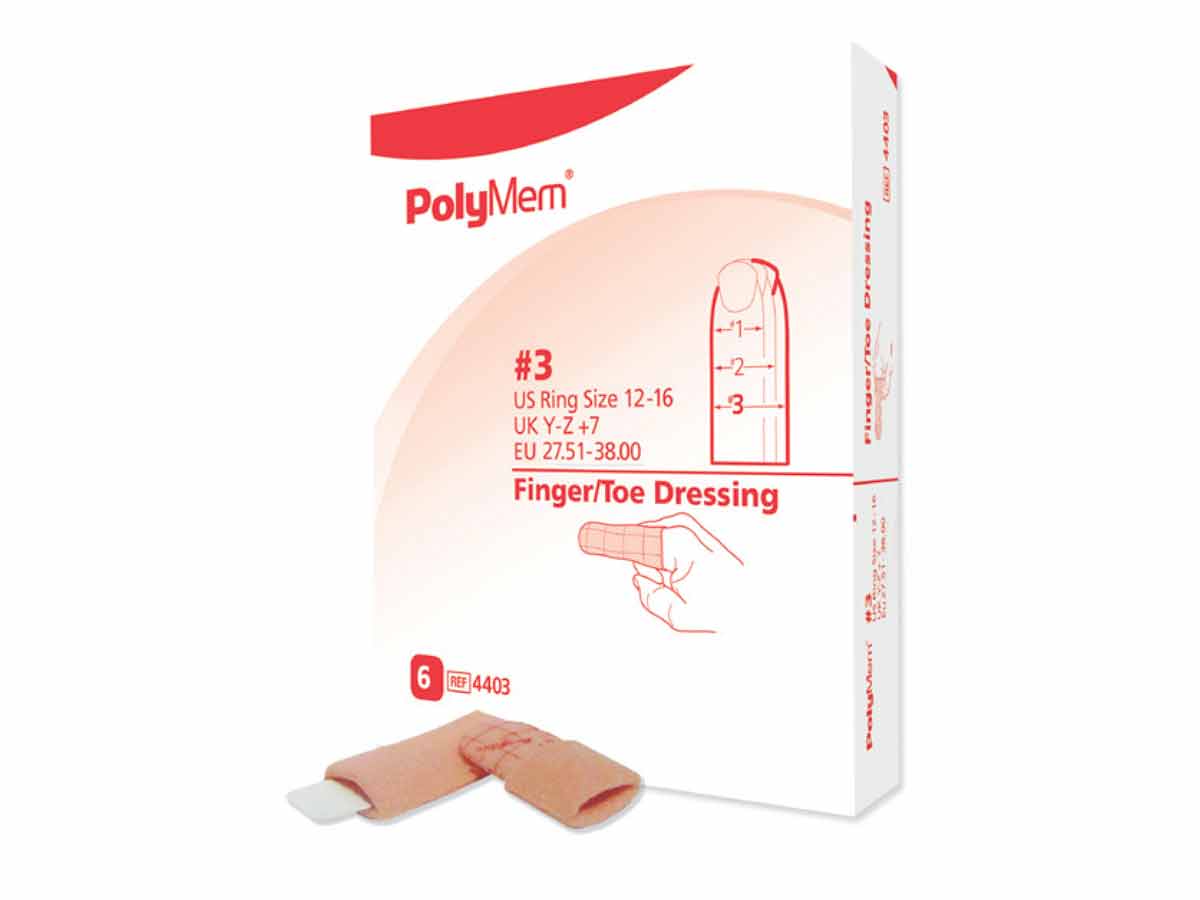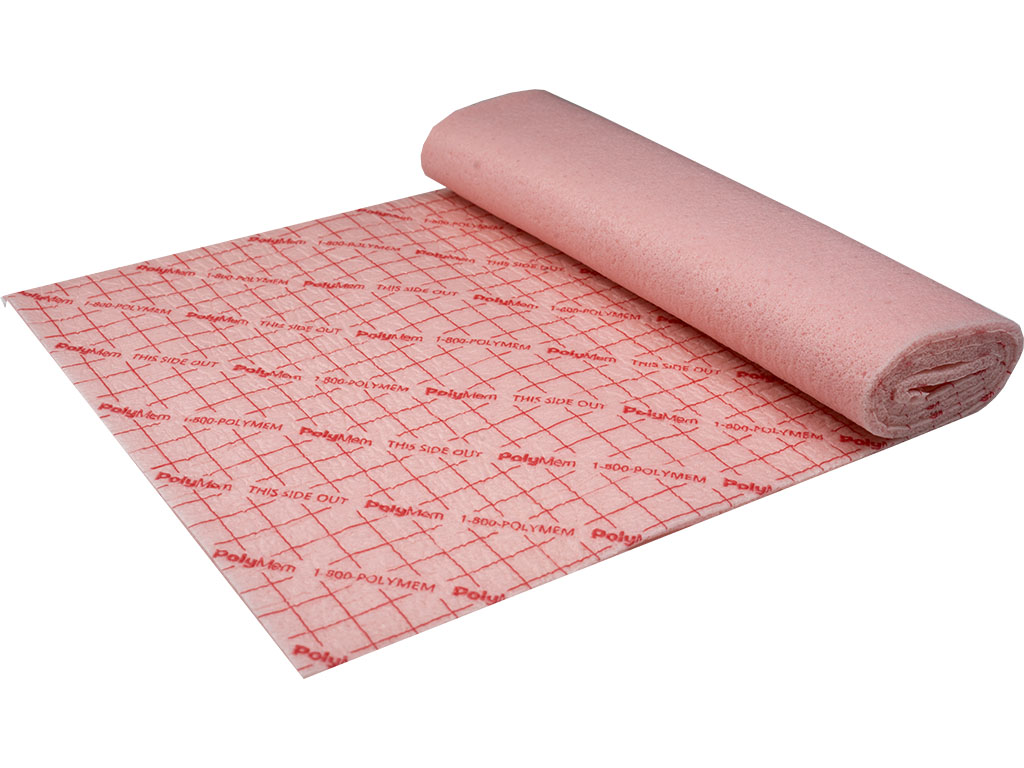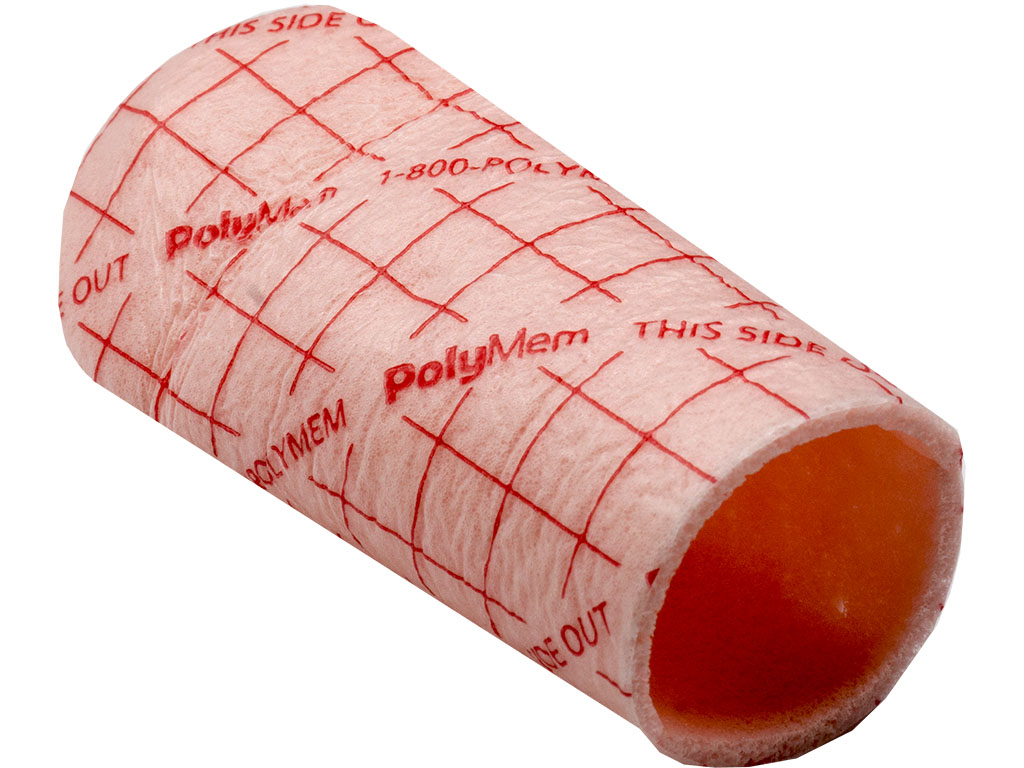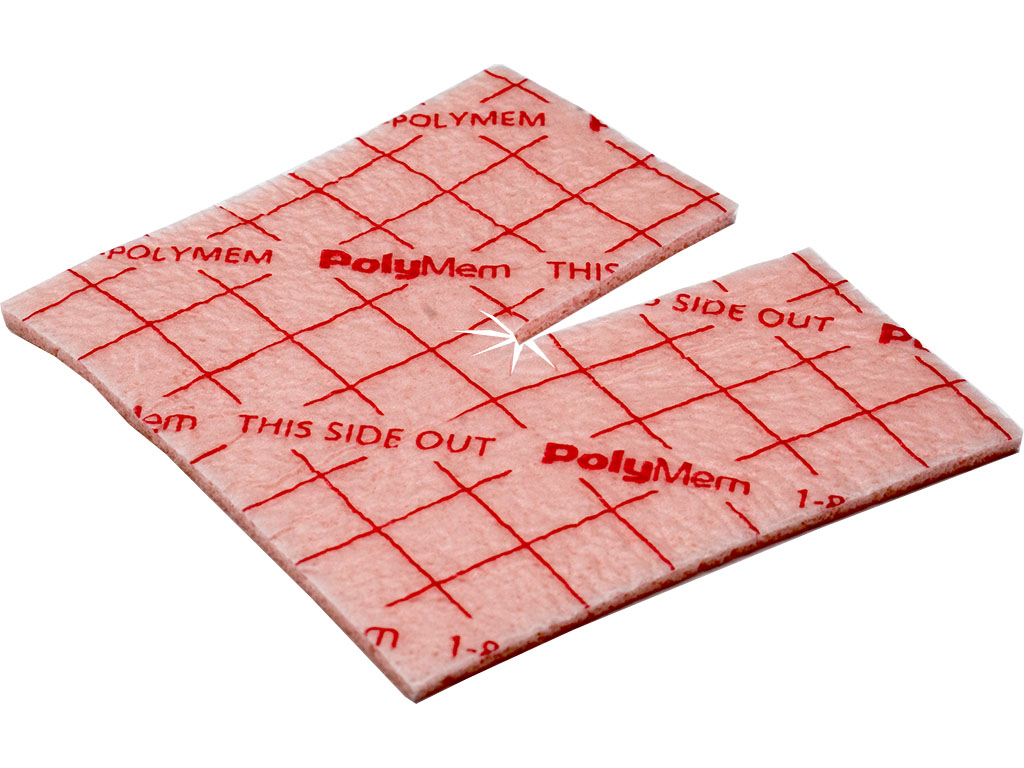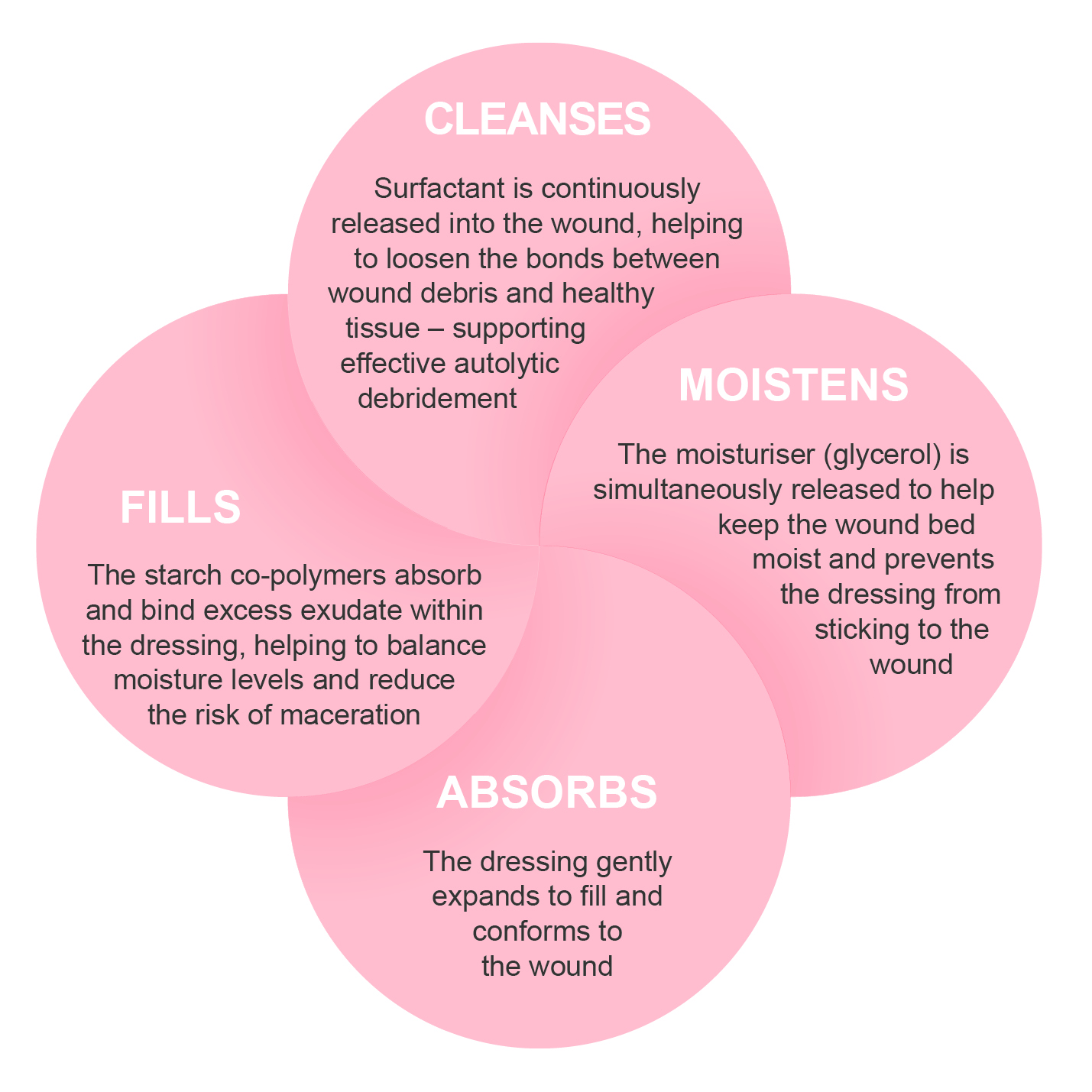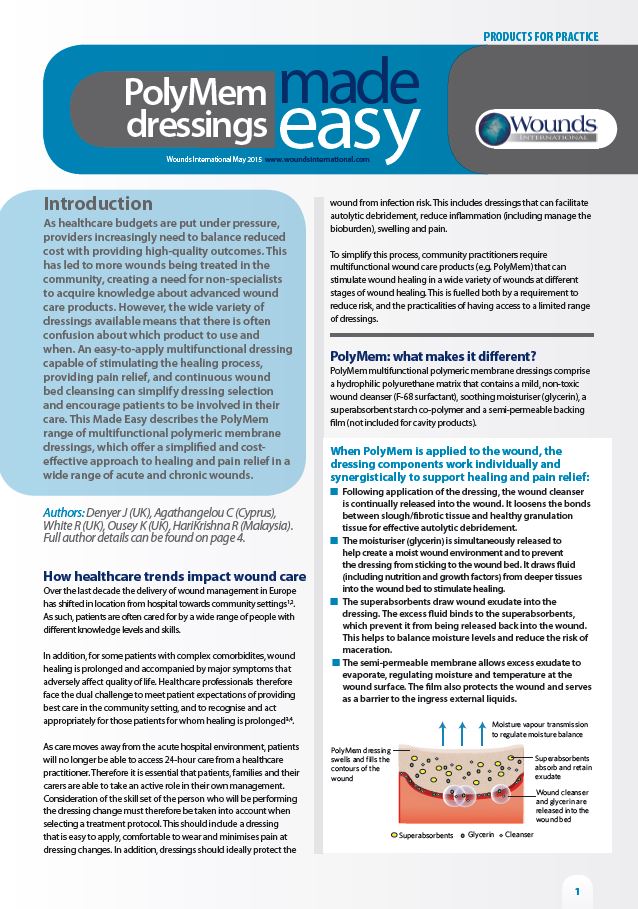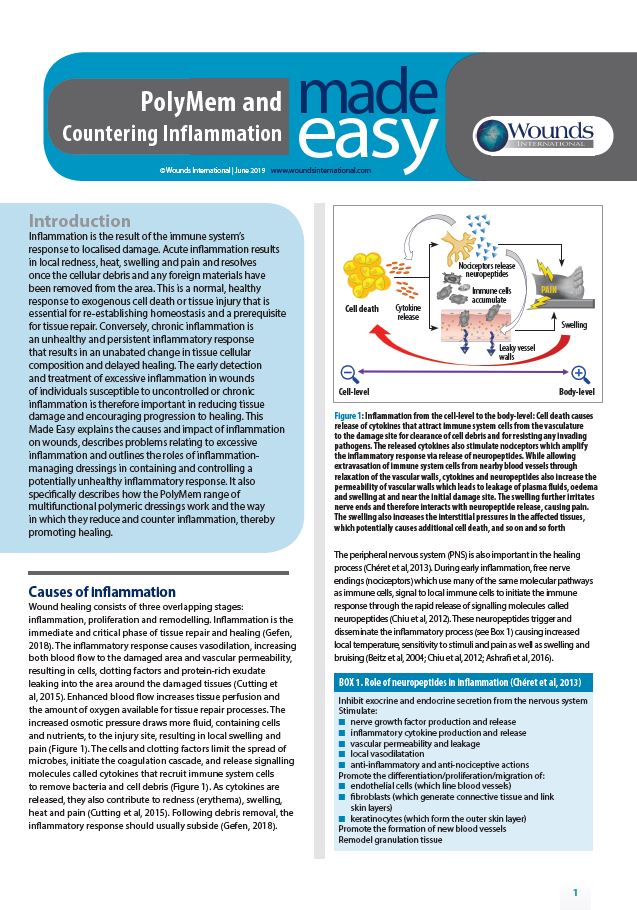Polymeric membrane dressing
A unique multifunctional polymeric membrane dressing, designed to facilitate healing, relieve pain and reduce inflammation.
PolyMem® dressings are a hydrophilic polyurethane matrix dressing with a mild, non-toxic wound cleanser, a soothing moisturiser, a superabsorbent and a semi-permeable film backing*.


